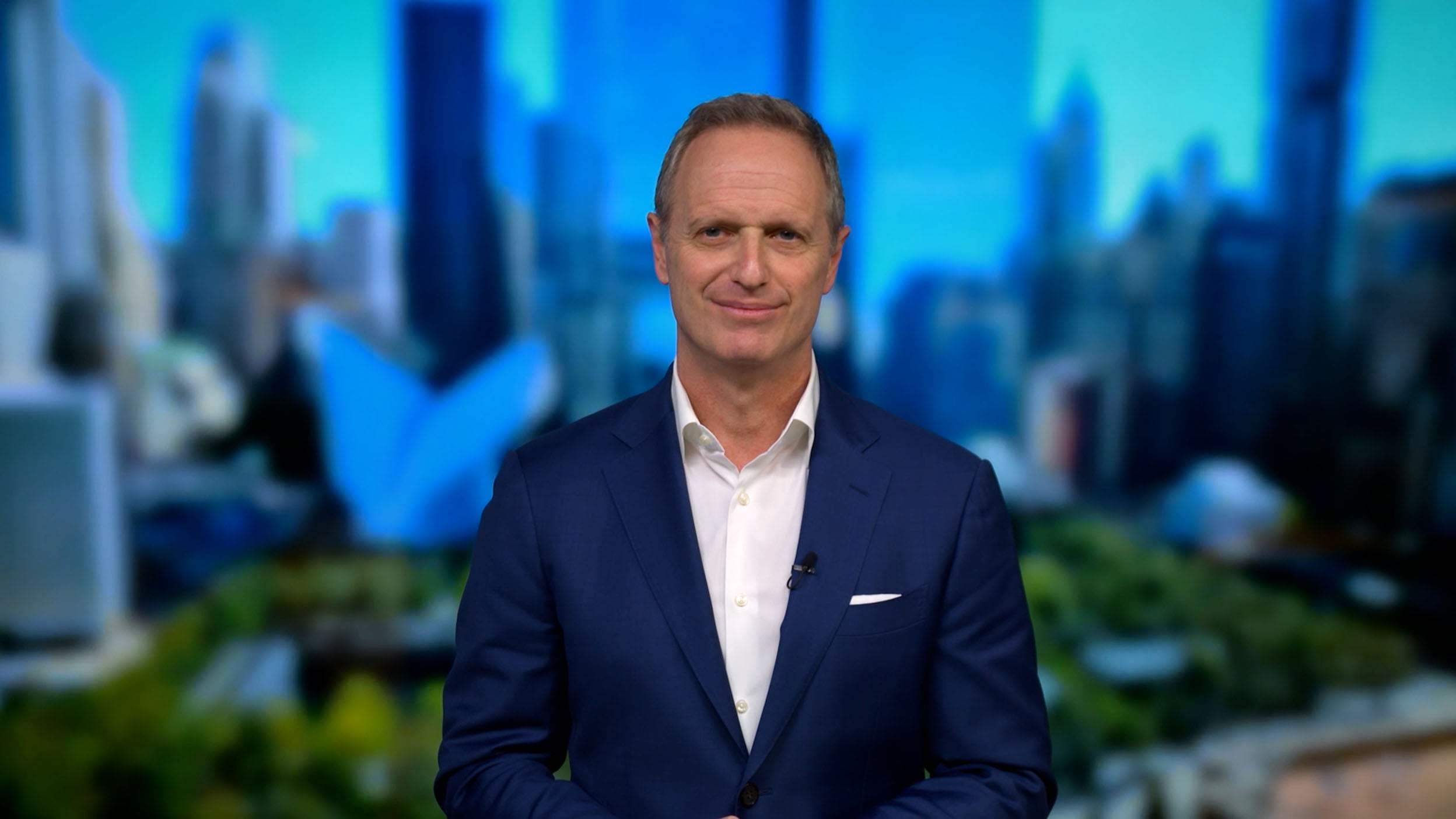
ETF Navigate uncertainty with low-volatility factor
With high concentration, heightened volatility, and growing downside risk, a low volatility strategy can help navigate these market challenges.

We found that equities are the largest contributor to total risk across all model types, outweighing the risks from rates, inflation, and credit.
Conservative models have experienced lower median returns, while aggressive models have had higher median returns.
ETFs constitute 63% of model assets but just 33% of the fee budget, with active mutual funds accounting for 67% of the fee budget.
What are the most common risks, factor tilts, and vehicles of choice in asset manager model portfolios, and how can ETFs and other vehicles be used to potentially enhance returns, diversify risk, and improve overall portfolio efficiency (including fees)? These are the questions we asked in our inaugural Invesco Asset Manager Models Benchmarking Study. This report provides a comprehensive analysis of asset manager model portfolios and offers valuable insights into allocation strategies, risk profiles, fee breakdowns, and performance metrics.
We used Invesco’s proprietary tools to provide a risk factor lens across 1,682 model portfolios in five categories: Conservative, Moderately Conservative, Moderate, Moderately Aggressive and Aggressive.
Below are four key highlights from the report. Request the full report here, which includes multiple case studies to encourage ideas and discussion.
We found that equities are the largest contributor to total risk across all model types, outweighing the risks from rates, inflation, and credit. While equity allocations range from 24% to 91% of the portfolio’s market value across the five model types, the risk contribution from equites ranges from 55% in conservative models to 95% in aggressive models. This underscores the significant impact of equity market movements on overall portfolio risk.
Factor weights can provide valuable insights to more mindful equity exposures.
Compared to popular market-cap-weighted benchmarks, most of the models we studied are underweight in the information technology sector in an attempt to reduce concentration risk, and are underweight in factors like quality, growth, and momentum. ETFs can be an efficient instrument to dial up or dial down factor exposures.
Conservative models have experienced lower median returns, while aggressive models have had higher median returns, reflecting their respective risk profiles and powerful broad market performance over the last five years.
| 1Y | 3Y | 5Y | |
|---|---|---|---|
| Conservative | 5.90% | 0.77% | 2.79% |
| Moderate Conservative | 8.11% | 1.70% | 4.44% |
| Moderate | 10.89% | 2.90% | 6.24% |
| Moderate Aggressive | 13.03% | 3.84% | 7.78% |
| Aggressive | 15.13% | 4.73% | 9.06% |
Past performance is not a guarantee of future results
ETFs constitute a significant portion of total assets (63% average) of the models we studied, and 31% of the fee budget. Active mutual funds, despite lower asset allocations (33% weighted), contribute the most to the fee budget (67%). Average fees across the five categories studied ranged between 29 and 34 basis points.
Looking further into the ETF exposures, index ETFs constitute a significant portion of total assets (55% average) of the models we studied, while active ETFs average just 8%. With over 1,300 active ETFs launched since 2019, there may be substantial upside for active ETFs to increase their presence in model portfolios.
We understand there is a stringent process for determining asset allocations, factor exposures, and sector selection that ultimately leads to ETF selection, both for both active and index-based strategies. It isn’t as simple as picking the cheapest product in a category. We can work with model portfolio providers to determine the best product to fit your goals — and assist in identifying both deliberate and potentially unintended factor tilts while highlighting the impact on total risk, fees, and forward-looking potential returns, before and after the addition of an ETF.
As asset manager model providers look to navigate an increasingly competitive landscape, we aim to bring increased transparency and analytics to assist our partners. Please reach out to your Invesco representative to schedule a conversation.
Gain timely insights into asset manager model portfolios with our comprehensive study. Discover allocation strategies, risk profiles, fee structures, and performance metrics to help you construct resilient portfolios and potentially enhance returns.

With high concentration, heightened volatility, and growing downside risk, a low volatility strategy can help navigate these market challenges.

Tariff, trade war, and market volatility headlines can make investors fearful. It's unsettling, but fear can also create opportunities.

Many international markets are undervalued compared to the US market, presenting the potential for higher returns.


Dive into our latest investment analysis report, where we uncover primary factors influencing today's investment landscape. This report provides a detailed examination of the risks associated with various asset classes, the performance of different investment models, and the allocation of assets and fees across investment vehicles. Download the full report to explore these key findings, gain valuable insights to make informed investment decisions, and enhance your strategies.
Designed by Invesco Solutions (Solutions), Invesco Vision is a decision support system that combines analytical and diagnostic capabilities to foster better portfolio management decision making. Invesco Vision incorporates capital market assumptions (CMAs) developed by Solutions, proprietary risk forecasts, and robust optimization techniques to help guide our portfolio construction and rebalancing processes. Advanced risk management approaches have been incorporated into the system such as de-smoothing of alternative risk factors, multi asset factor decompositions, in addition to stress test analyses (both historical and hypothetical) to understand the drivers of volatility within our portfolios. By helping investors and researchers better understand portfolio risks and trade-offs, it helps to identify potential solutions best aligned with their specific preferences and objectives.
The Invesco Vision tool can be used in practice to develop solutions across a range of challenges encountered in the marketplace. The analysis output and insights shown here from Invesco Vision does not take into account any individual investor’s investment objectives, financial situation or particular needs. The insights are not intended as recommendations to invest in a specific asset class or strategy, or as a promise of future performance. For additional information on our methodology, please contact Invesco.
All material presented is compiled from sources believed to be reliable and current, but accuracy cannot be guaranteed. This is being provided for informational purposes only, is not to be construed as an offer to buy or sell any financial instruments and should not be relied upon as the sole factor in any investment making decision. This should not be considered a recommendation to purchase any investment product. As with all investments, there are associated inherent risks.
This does not constitute a recommendation of any investment strategy for a particular investor. Investors should consult a financial professional before making any investment decisions if they are uncertain whether an investment is suitable for them.
This material may contain statements that are not purely historical in nature but are “forward looking statements.” These include, among other things, projections, forecasts, estimates of income, yield or return or future performance targets. These forward-looking statements are based upon certain assumptions, some of which are described herein. Actual events are difficult to predict and may substantially differ from those assumed. All forward-lookingstatements included herein are based on information available on the date hereof and Invesco assumes no duty to update any forward-looking statement. Accordingly, there can be no assurance that estimated returns or projections can be realized, that forward-looking statements will materialize or that actual returns or results will not be materially lower than those presented.
The opinions expressed are based on current market conditions and are subject to change without notice. These opinions may differ from those of other Invesco investment professionals. Invesco Advisers, Inc. is an investment adviser. It provides investment advisory services to individual and institutional clients and does not sell securities.
This link takes you to a site not affiliated with Invesco. The site is for informational purposes only. Invesco does not guarantee nor take any responsibility for any of the content.